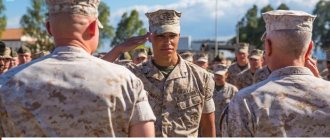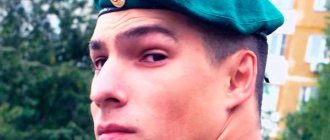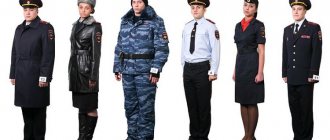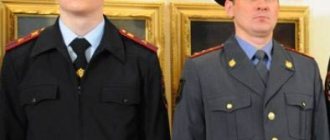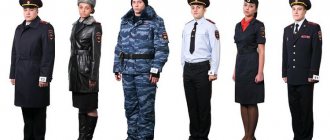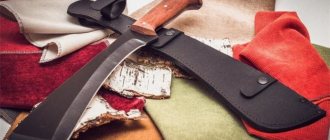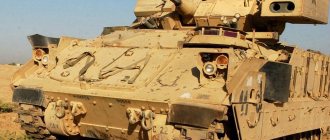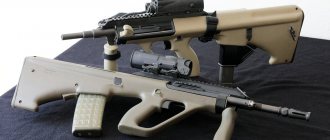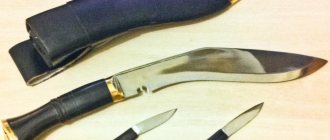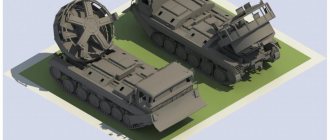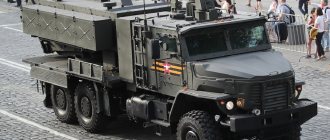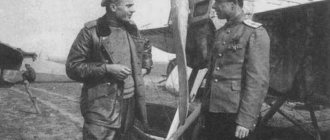American uniform: description, colors, purpose
This uniform is divided into three types: field, utilitarian and as prescribed by the command staff. The purpose of the uniform for a parade, formation or everyday service - there is no such division in the army.
You may be interested in:Second-hand: what is it, how to choose, the history of its appearance
Based on climatic conditions and established characteristics of society, a certain uniform is selected and worn. The field utilitarian uniform is worn on special occasions. On days of dismissal and vacation, employees are allowed to wear civilian clothing.
Uniform for the season
The American uniform is not classified according to seasonality. The type of winter clothing implies the issuance of an additional insulated jacket or pea coat. In cold weather, employees can put on a variety of warm clothes, wear insulated jackets, coats and raincoats, the list of which is approved by the commander for the “winter clothing” uniform. Soldiers are issued a daily uniform for service, but with permission to purchase the uniform themselves.
You will be interested in: “Milavitsa”: customer reviews, product range and quality
The army has a requirement to wear a uniform for social events. The type of costume is indicated in the invitation.
All types of military uniforms are divided into:
- standard, green or olive;
- camouflage;
- three- and six-color, desert;
- white and snow white.
Shoes are worn black - for uniform, white - in accordance with the specified clothing model, suede (brown or beige) - with a camouflage suit.
Navy demobilization uniform
Changes in military legislation that took place in 2007 reduced the period of conscription military service from two years to one year. This was done due to the need to combat hazing (“hazing”) and the transition to a contract basis.
According to the old unspoken rules, a soldier who served for up to 6 months was considered a newcomer and had no rights, and was obliged to follow the orders of the senior conscript.
After serving for 6 months, a soldier becomes a scoop, and the scope of rights increased due to the arrival of young recruits. Next came the “elephant” (from a year to a year and a half) and the one who had a hundred days left to serve was considered a “demob.”
In this regard, the preparation of the demobilization uniform of the Navy began precisely at this time with the help of the most competent and hard-working soldiers of the junior conscription. The uniform was sewn to fit the figure, new chevrons and stripes were sewn onto the sleeves, preferably with solid inscriptions (Special Forces, Special Force, etc.). An aiguillette must be sewn on, and the shoulder straps had to be white and gold and, of course, with an anchor.
The collar of the jacket was trimmed in the manner of an admiral's with white threads, and plastic inserts were installed in the breast pockets. They did not forget about the badges received or purchased during the service. Usually these were insignia, commemorative medals, a “Warrior-Athlete” badge, etc.
Demobilization uniform of the Russian Navy (photo)
Nowadays, a soldier does not have time to forget civilian life. Learn military science from the officers and is already ordering a uniform for demobilization. Sometimes there are such carnival costumes.
US Army Uniforms
There are four subtypes of kits used:
- ceremonial day off;
- everyday;
- worker;
- field.
The cut style of different ranks is the same, the only difference is in the quality of the material and the use of finishing elements. Blue material is used to sew festive uniforms. The set includes: a cap, a jacket with stripes on the forearms, trousers with stripes on the side seams, a light shirt, a tie and shoes.
There are distinguishing marks for ordinary employees, sewn along the shoulder, and across the shoulders for commanders. The headdresses of senior ranks are stitched with gold-plated threads. There is also a variety of colors for shoulder straps and edgings used in patches.
US Marine Corps Uniform
The American soldier's uniform for the Marine Corps stands out for its diversity. The tailoring style and color scheme of the uniform are the most recognizable; the clothes are sewn according to military traditions. There are three subspecies:
- ceremonial weekend;
- everyday, work;
- field
The material for sewing the festive costume for employees contains the colors of the American flag. For everyday service, blue uniform colors are used. The dress uniform is white, intended for celebrations and social receptions. Commanding officers may wear a dagger to receptions.
The service uniform is made of green material. At this time, the form changes to utilitarian, but is not used on special occasions.
The color of the material for sewing field uniforms is camouflage: for service in forest areas - green/brown/black, for service in desert areas - sand/brown/gray. The set includes a brown leather belt, a light green T-shirt, light brown suede boots, an eight-cornered cap or a Panama hat. The Corps emblem is embroidered on the front of the cap or panama hat.
In hot weather, it is allowed to roll up the sleeves to the outside, with the wrong side up. In other troops, the sleeves are rolled up with the camouflage side on the outside with a cuff formed along the edge of the rolled up sleeve.
US Navy uniform
The American military uniform of the Navy consists of a set made of blue material, without division by rank. It is considered everyday. For special occasions, the high command puts on a tailcoat and trousers, a vest, a cap, black boots, a bow tie, and a light shirt.
Each employee is issued two sets of uniforms. One set of clothes is sewn from thick woolen fabric. This is a winter uniform for employees. Another set made of thin fabric is designed to be worn in the warm season. For command personnel, the dress uniform is completely white. For employees in hot areas, the shirt has short sleeves.
For the cold season, a warm blue flannel shirt is provided. The working sailor uniform consists of a khaki set. The cap, socks, boots and belt are black. Naval aviation personnel in the Navy wear black boots, socks, green trousers and a service jacket. Shirt - blue or light green.
For working moments on a ship or boat, the technical team wears blue overalls. In cold or rainy times, a blue raincoat, a jacket for command personnel and an insulated jacket for sailors are provided. The command staff's buttons are yellow, the sailor's buttons are white.
Fleet
Since the design of the uniform was taken from the Marines, most of the kit is already familiar to us, although there are some differences.
Jacket
Slightly fitted, fastened with buttons, and a Velcro shoulder strap on the chest. Mandarin collar, fastened with Velcro. On the chest there are 2 straight volume pockets with buttons and Velcro (there is a small flap that closes the Velcro if it bothers you). On the left there is an internal pocket for pens. There are 2 corner pockets on the biceps, fastened in the same way as the chest pockets, at the bottom of each there is a drainage hole. The cuffs are fastened with a button. Reinforcements are sewn on the elbows.
Parka
A very functional item if you are going outdoors in cool weather. The fabric is GORE-TEX, and this, in principle, speaks for itself. Durable, waterproof, windproof and breathable membrane fabric. Composition: 100% nylon twill. Fastens with a zipper. Attached at the waist, stand-up collar with a hood inside. All seams are taped against water, the zippers are also waterproof. 6 pockets: 2 oblique volume pockets on the shoulders (closed with a flap with Velcro), 2 vertical mortise pockets on the chest (closed with a zipper), 2 lower mortise pockets (closed with a flap with buttons and Velcro). On the bottom there are side flaps to warm your hands. The cuffs are fastened with Velcro. On the left chest there is a vertical shoulder strap with Velcro. Underarm ventilation flaps with zippers.
Trousers
Button fly, wide legs, eight pockets. The back ones are flat, mortise, closed with a flap, fastened with 2 buttons. The side ones are ordinary, mortise, without valves. The hip pockets are voluminous, the flap is fastened with 2 buttons and Velcro (with an additional flap covering the Velcro, if necessary), and there are drainage holes at the bottom. And two more pockets below the knees on the sides, they are closed with flaps with Velcro and also with drainage holes. There are reinforcing pads on the seat and knees, and on the knees they are baggy, with folds. Part of the belt with a sewn-in elastic band. At the bottom of the trouser leg there is a drawstring.
Combat shirt
The rules are a dark blue cotton T-shirt. All other options are imitation of the Marines, to which the naval authorities traditionally turn a blind eye.
And, since the blue cotton T-shirt is of little interest to anyone, I’d rather talk about the wonderful combat shirt from the Marine Flame Resistant Organizational Gear (FROG) kit, which is highly respected by Navy SEALs and other special forces creatures of the US Navy.
The torso and armpits are made of sweat-wicking fabric (80% modacrylic fibers, 15% cellulose fiber, 5% viscose fiber with silver content). The sleeve and collar edging are made of fire-resistant material (65% fire-resistant viscose fiber, 25% paraamide, 10% nylon). The sleeves are reinforced at the elbows, and there are pockets with a Velcro flap at the biceps. Stand-up collar with zipper.
Belt
2-inch braided nylon tape fastened with a metal automatic buckle.
Hats
And again the “octagonal” confederate and boonie hat with the same MOLLE system and ventilation holes covered with a fine mesh.
Shoes
Black leather boots, the same as those worn by the US Coast Guard. They are not particularly camouflaged, but they protect well from water. As before - at least 8 inches in height, comfortable last, genuine leather, good sole, no side zippers, hooks curved inward.
Uniforms for the US Air Force
The American uniform for Air Force personnel was tailored to meet the needs of certain conditions. The material must not get wet, not be blown out in strong winds, have properties that allow it to withstand flames, and be comfortable in a working environment.
The clothing set of an American technical soldier includes a camouflage insulated jacket, overalls, leather boots or high boots. The camouflage uniform has blue, gray, and blue colors. Today, a new camouflage is being developed, which will soon replace the old one. The material is camouflage, painted green, gray, white, brown or sand.
MARPAT and tiger stripes
Swimming first, so be familiar with the NWU (Navy Work Uniform). The basis for the working uniform of the navy was the UCP (Universal Camouflage Pattern), the same pattern and coloring system, only the colors were different. The main color of the NWU is blue, also known as Type I, which in principle is not intended to camouflage a fighter, but so that stains and dirt are not very noticeable on the uniform, and the navy has its own working uniform. The Navy affectionately calls the Type I blueberry. I think we won’t consider it, since we are talking about camouflage kits.
Types II and III (desert and forest patterns, respectively) are intended specifically for combat operations and camouflage and were developed based on the Marine combat camouflage pattern MARPAT (MARine PATtern), only instead of the horizontal orientation of the pattern, vertical was chosen and the colors were changed. Types II and III are also worn by SEALs (SEA, Air and Land), SWCC (Special Warfare Combatant Craft Crewman), Seabees (engineers), and air support teams in combat zones. And in some situations, naval personnel also wear ACU (Army Combat Uniform).
- "Man and Camouflage - ACU"
- "Along the Shoreline: MCCUU and CGCUU"
As you can see in the picture, it’s the same scheme, only the colors are different.
Like the Marines, the camouflage pattern contains the symbol of the fleet - an eagle, an anchor and a frigate and the inscription USN (United States Navy) below them:
The composition of the fabric is 50/50 nylon and cotton, but it is stronger than usual and is slightly saturated with water (more dense weaving and water-repellent impregnation), which is logical for a marine uniform.
Well, ABU (Airman Battle Uniform) is aviation combat uniform.
The ABU is painted in tigerstripe, a member of a family of camouflage patterns developed for jungle camouflage during the Vietnam War. Tiger stripes turned out to be such a successful pattern for such terrain that, in addition to aviation, they are still used by Navy SEALs and Green Berets during special operations in the jungle. Some units of the Australian Armed Forces also use this design. Moreover, no less than the pattern itself, camouflage properties are provided by a special fabric that meets the NIR standard and makes it difficult to recognize using equipment that detects differences in infrared radiation.
In addition, before sewing, the fabric is pre-shrinked so that the shape does not wrinkle, shrink or fade.
Fabric composition: 50/50 cotton-twill and nylon.
Coast Guard Uniform
The US Army Coast Guard uniforms are varied. Suits and overalls are blue, shoes are black; for everyday service, for work, there are suits in khaki, black/olive/brown, usually with brown or sand suede boots. The ceremonial uniform of the coast service is made of white fabric. A white cap and boots are appropriate here.
For women serving in the coast guard, they are issued a set of clothing, which includes a blue skirt or trousers, a blue shirt, a jacket, and shoes.
Aviation
Jacket
Slightly fitted cut, button fastening, turn-down collar. 5 pockets: 2 flat - on the chest, 2 flat - on the stomach, a small pocket for pens on the lower part of the left sleeve. All fasten with hidden buttons and have drainage holes. The cuffs are also fastened with buttons. Elbows are reinforced. All internal seams are additionally treated for strength, the fabric is fire-resistant.
Parka
Identical to the parka from the NWU set, so read above.
There is also a waterproof set of jacket and pants, packaged in a waterproof bag. Made from Ripstop nylon. Jacket and pants with zippers for easy dressing.
Trousers
Deep, as for the BDU cut, armhole. Button fly. Not too wide. There is an elastic band sewn into the waistband. 9 pockets: 2 very large voluminous ones on the hips (have drainage holes, closed with flaps and fastened with buttons), 2 voluminous on the shins (have drainage holes, closed with flaps and fastened with buttons), 2 mortise pockets on the seat (closed with flaps and fastened with buttons ) and 2 mortise ones on the sides. The right calf pocket has a triple pen pocket. Reinforcements are sewn on the seat and knees. Internal and external seams are additionally treated for strength, and the fabric is fire-resistant.
Belt
2" nylon tape and plastic buckle.
T-shirt
100% cotton, sandy color.
Hats
In addition to the well-known Boonie hat with the MOLLE system and a cap (both with holes for ventilation, covered with fine mesh), this camouflage is equipped with a warm fleece hat in pale green color (to go with the parka).
Shoes
Minimum 8 inches in height, comfortable last, natural suede, good sole, only lacing, hooks curved inward, no zippers... These boots are distinguished by a non-standard pale green color.
And, interestingly, the color of the socks must match the color of the shoes.
US Army patches and insignia
Various distinctive stripes indicate:
- structural unit of the unit;
- type of army;
- experience;
- official position and awards.
Badges, ribbons and medals are also worn. A cap or cap is worn as directed by the unit commander, but in transport, in a car, a serviceman is required to wear a cap. For violating the rules established for wearing clothing, the punishment is three months' imprisonment in a unit prison, without payment of wages.
